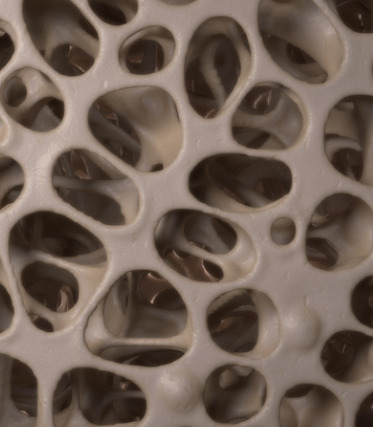Osteoporosis and the Feet
As you age, your bones start absorbing calcium at a slower rate. This process can become more prevalent as we age, and the body is unable to maintain bone growth. At this point, we lose bone mass faster than our body can create bone and if this condition continues, the disorder is known as osteoporosis, which leads to weakened the bones. While osteoporosis typically affects the spine, hips, and wrists, it can also have implications for the feet. We will share to you some information about this ‘Silent Killer’ disease and how it can affect the feet as well as ankles.
The process mainly increases as we age but not exclusively and can be found in those of us whom have had chronic glucocorticoids treatment, experience gastrointestinal disorders, diabetes mellitus (Type 1 and Type 2), rheumatoid arthritis, liver disease, gluten enteropathy, multiple myeloma and other hematologic disorders.
Reduced bone density develops when our body is unable to maintain sufficient bone growth. We lose bone mass faster than our body can create bone.
At what level does osteopenia become osteoporosis?
A T-score of -1 to -2.5 indicates osteopenia (low bone density). A T-score of -2.5 or lower is bone density low enough to be categorized as osteoporosis.
While osteoporosis typically affects the spine, hips, and wrists it can and does still have implications for our feet.
Because of the forces our feet need to absorb on a daily step by step basis keeping our foot bones strong is essential for health. Osteoporosis literally means ‘porous bone’ , appears in those whose calcium loss outpaces their ability to absorb it. Genetics, hormonal fluctuations, excessive drinking, or smoking increases our risk factor for this dangerous condition.
The effects of osteoporosis on the foot may also lead to balancing issues resulting in an increased incidence for falls and injuries. Often the ankle or foot can become painful and swollen even when a traumatic injury has not occurred.
Here are some ways in which osteoporosis can impact the feet:
- Stress fractures. Weakened bones are more prone to stress fractures, these are tiny cracks in the bones caused by overuse or repetitive stress.
- Decreased bone density. Osteoporosis lessens bone density throughout the body, including the feet. This can lead to thinning of the bones in the feet, making them more susceptible to fractures even with minimal trauma.
- Foot deformities. Foot fractures brought on by osteoporosis can sometimes result in foot deformities. For instance, foot arch fractures might result in flat feet because the arches of the feet may collapse. These deformities can affect the overall foot structure and can cause discomfort making walking difficult.
- Loss of balance and stability. Weak bones in the feet can affect balance and stability, increasing the risk of falls and related injuries.
To manage osteoporosis and lessen its impact on the feet, it is crucial to focus on the overall bone health. This includes:
- Adequate calcium and vitamin D intake: These nutrients are essential for maintaining bone health. Calcium-rich foods should be included in the diet. Sun exposure as well as vitamin D supplements can help ensure sufficient vitamin D levels.
- Regular exercise: Weight-bearing exercises, such as walking, jogging, dancing, and strength training, help stimulate bone growth and increase bone density.
- Falls prevention: Taking steps to prevent falls can help reduce the risk of fractures. This may involve maintaining a safe home environment, using assistive devices if necessary, wearing appropriate footwear with good support and traction, and addressing any balance or gait issues through physical therapy or other interventions.
- Lactoferrin: Is one of the proteins that transfers iron to the cells essential for osteoblast activity, (the building blocks of bone), which become affected in reduced bone density. Ferrin, meaning iron in latin, is a major component of hemoglobin, a type of protein in red blood cells that carries oxygen from your lungs to all parts of the body. Did you know that Gary Brecka the renowned human biologist and researcher spends just 8 minutes a day of breath work adopting 3 rounds of 30 deep breaths – accessible to us all. https://vm.tiktok.com/ZGJHCdTEC/
Prevention and decreasing symptoms of osteoporosis are essential for keeping you on your feet to remain mobile and active. Since osteoporosis can be hereditary taking extra steps early on is recommended. A simple dexa scan can provide you with your bone density levels. If you already have received a diagnosis, your podiatrist will advice on footwear specific for you and your foot type.




